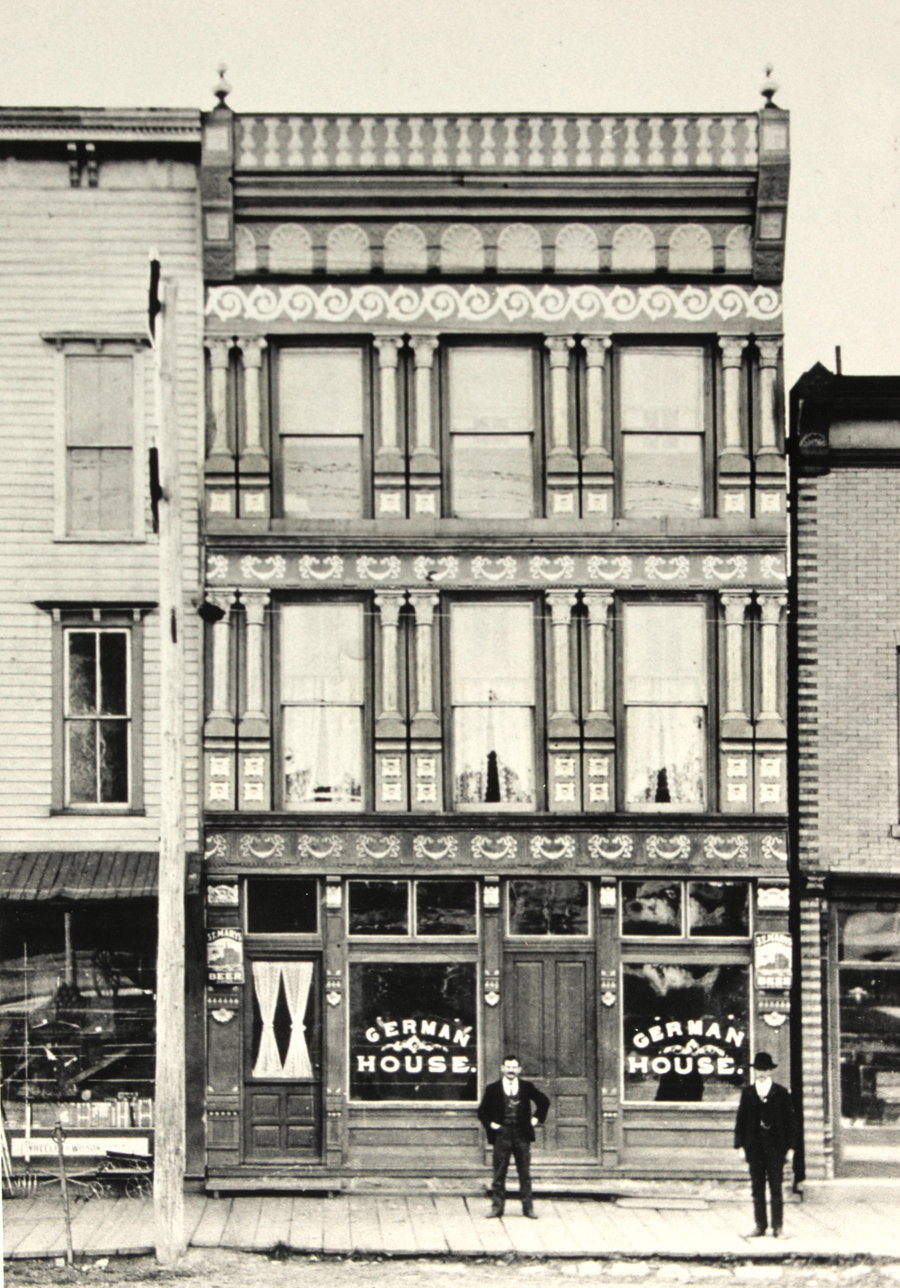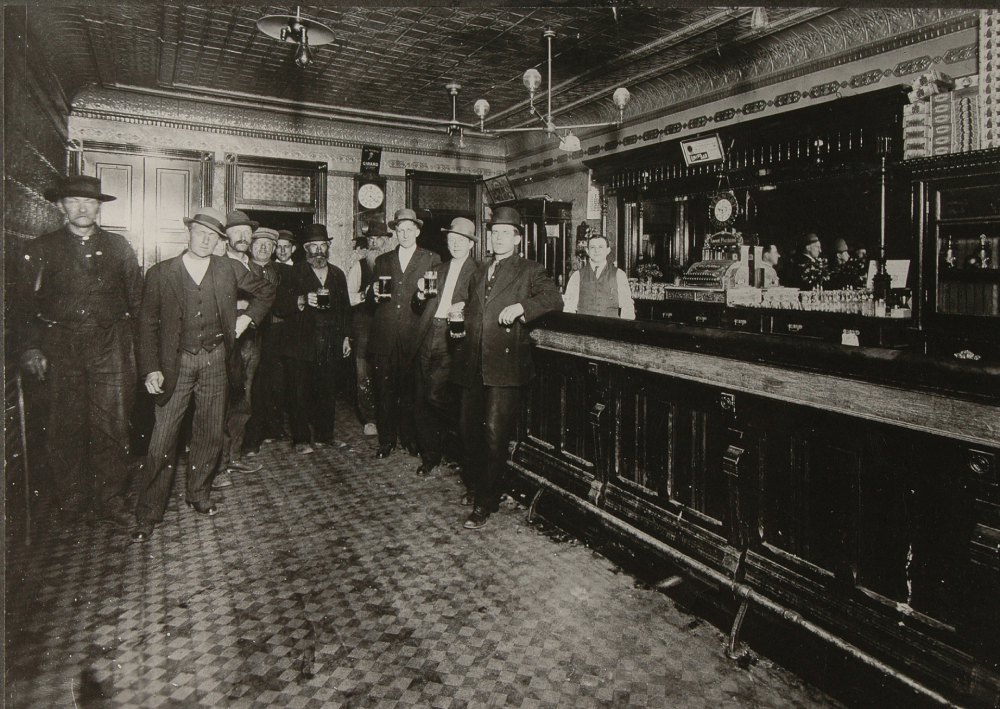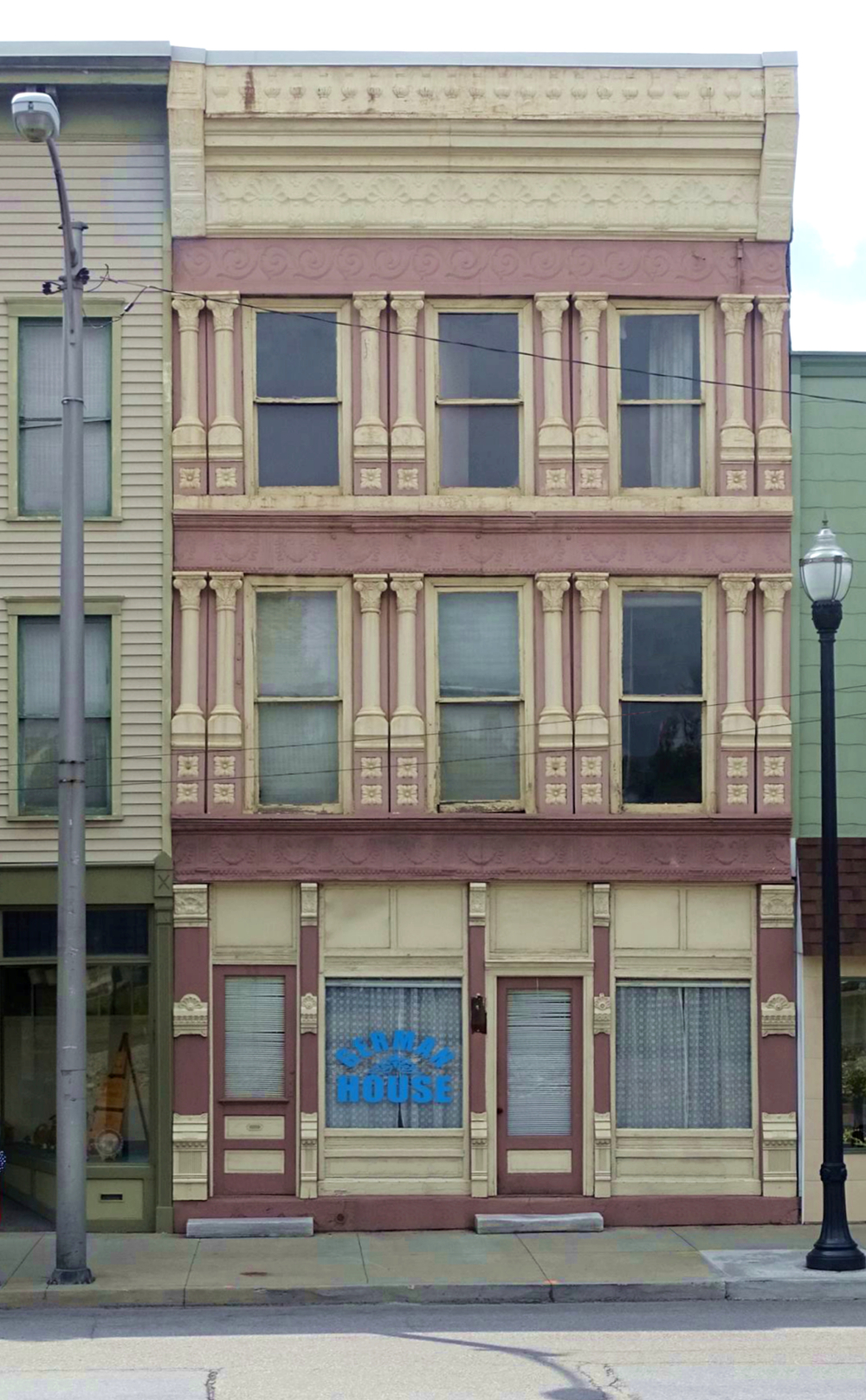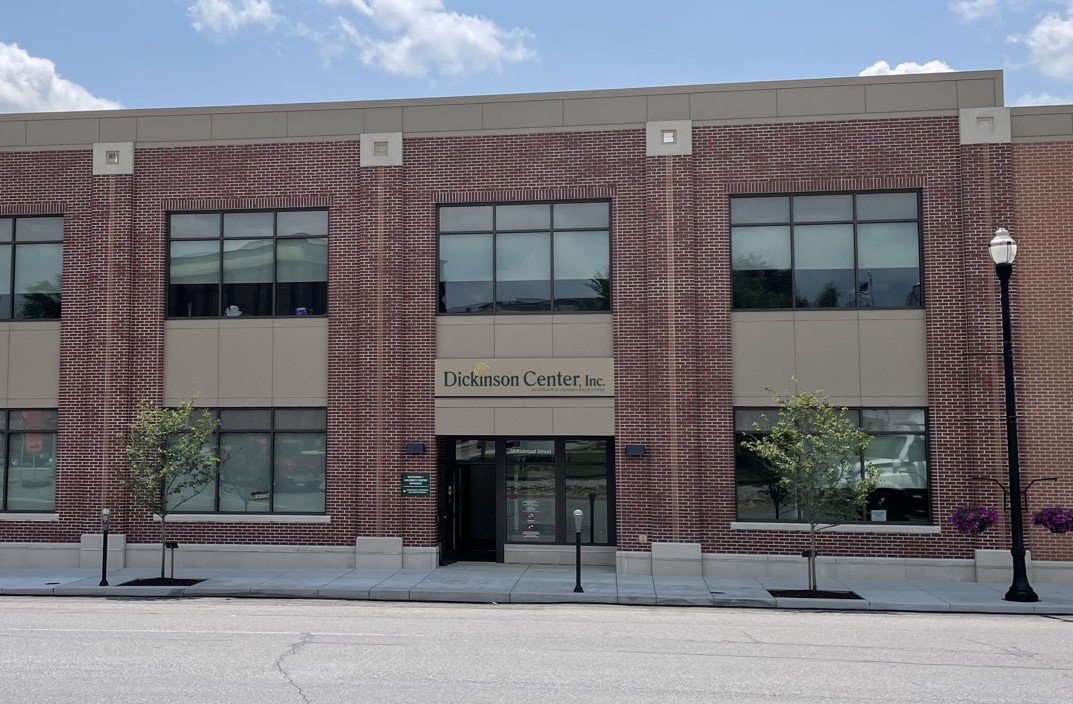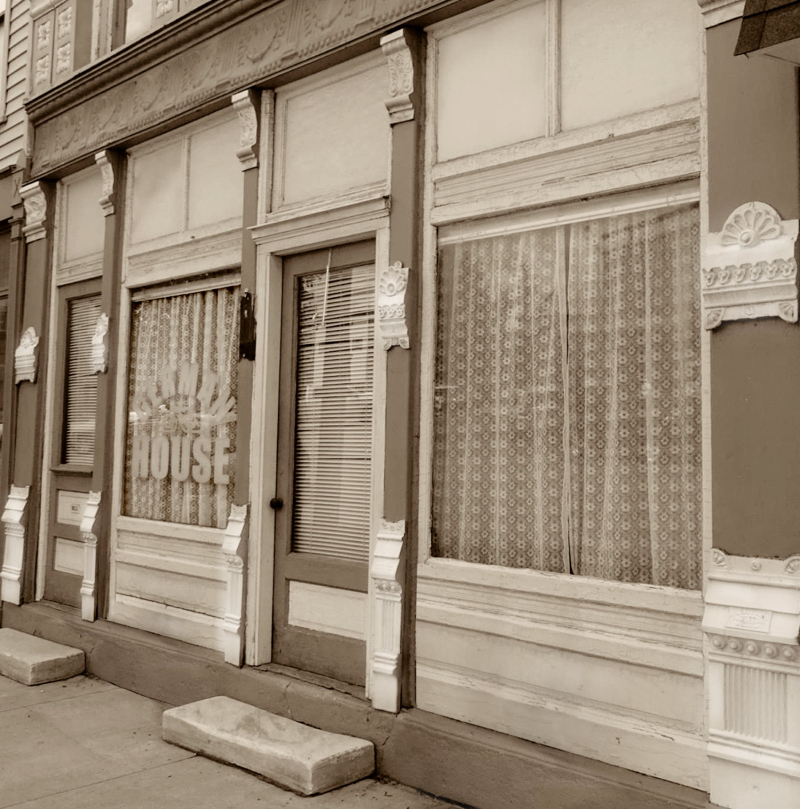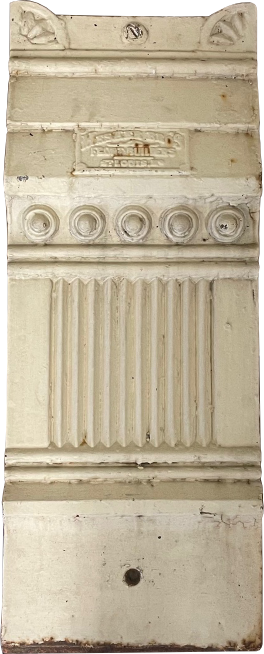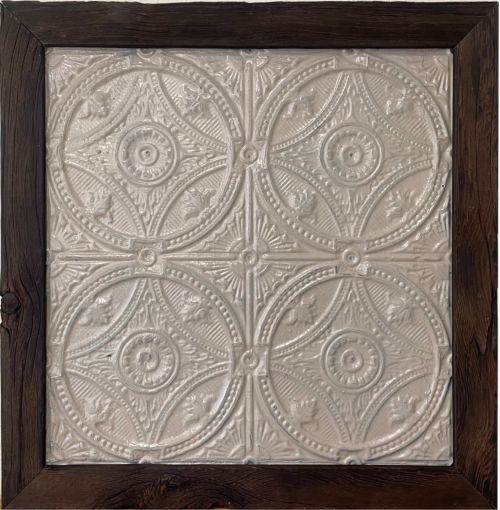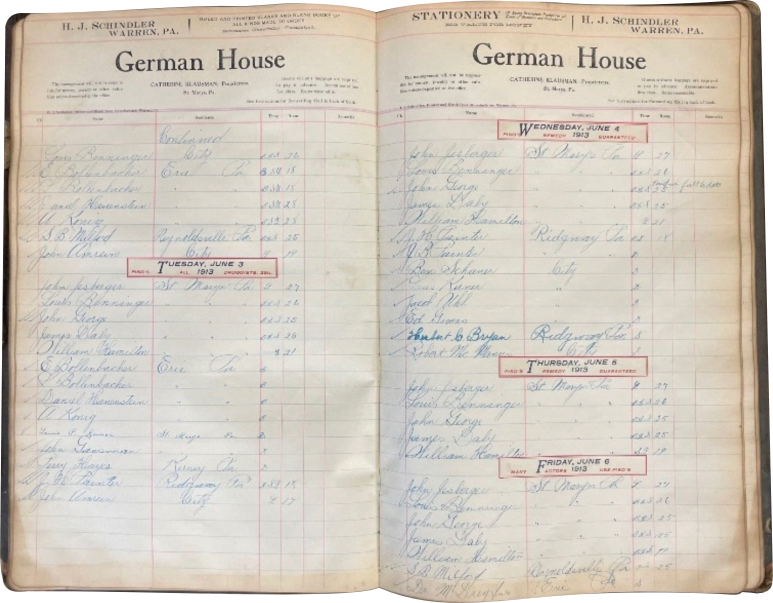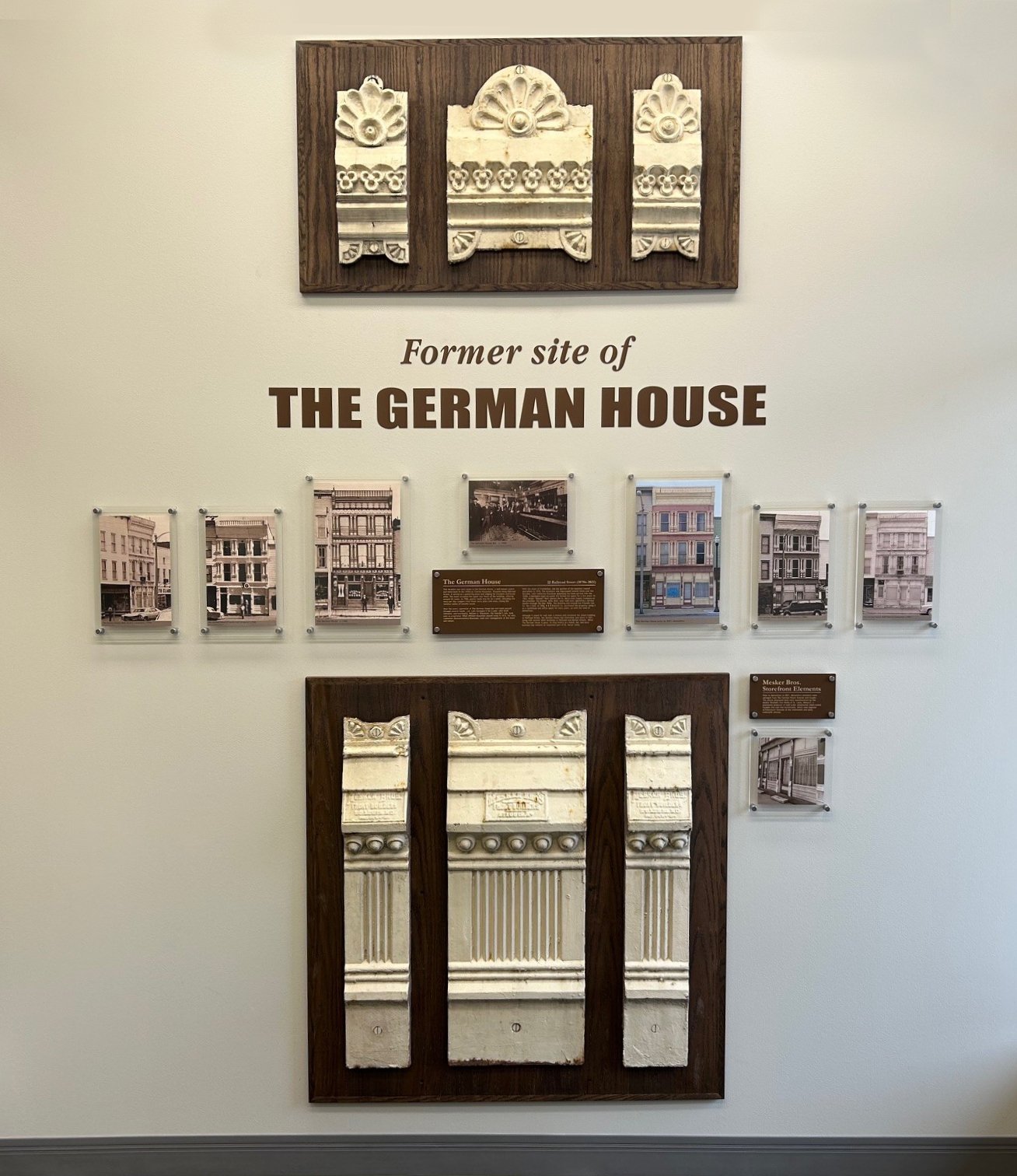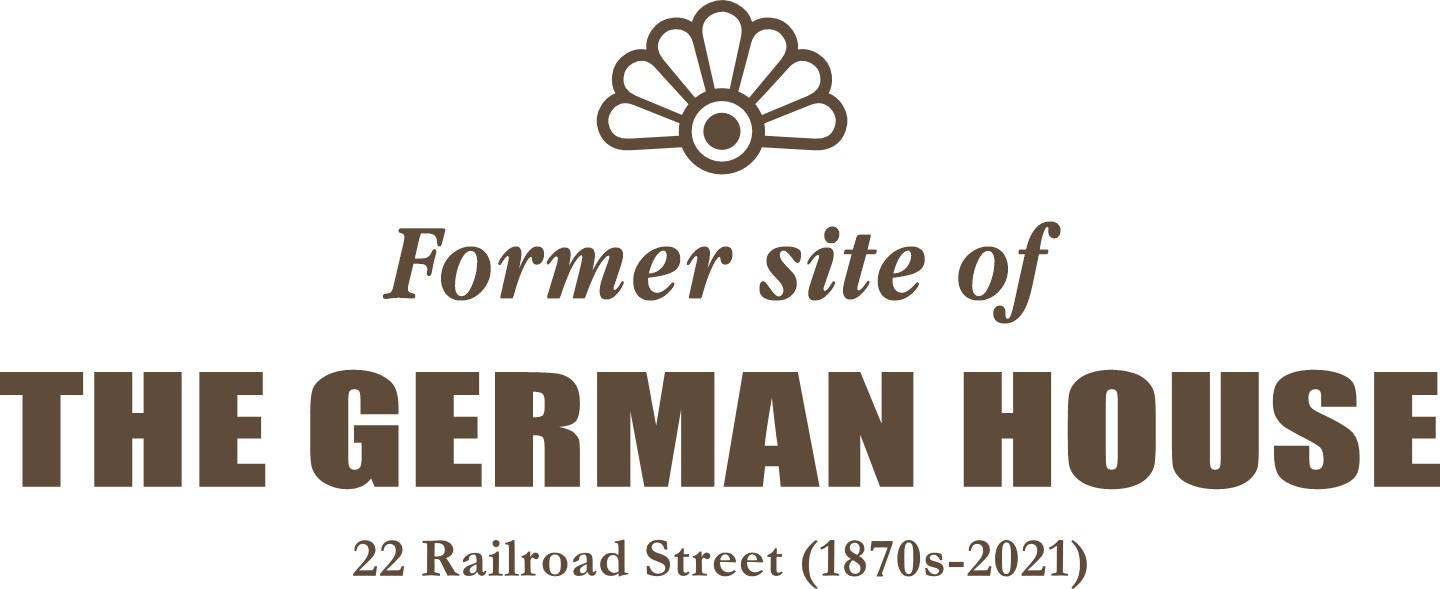
HISTORY
22 Railroad Street was once home to the German House, a well-known tavern and hotel built in the 1870s by Charles Klausman. Situated along Railroad Street, it served as a gathering place and lodging for travelers and locals alike. The hotel occupied the upper two floors of the building, offering around 20 rooms. In 1900, guests could stay for $4 a week, including one meal per day. Ledgers from those early years still exist, listing the familiar names of notable locals.
Over the years, operation of The German House bar and hotel passed through several hands. J.M. Lion managed it for a year. John Groll followed, and eventually, William A. Klausman, the founder’s son, took over as proprietor. When William Klausman passed away in 1912, his wife, Catherine (Kronenwetter) Klausman, took over management of the hotel and saloon.
With the onset of Prohibition, the bar portion of the business ceased operations in 1918. The structure was repurposed several times over the decades, with Catherine Klausman operating the hotel portion into the 1930s. A hardware store occupied the former bar space for a few years. In 1923, Urban “Shaney” Wolf opened the St. Marys Auto Supply Company on the premises. His brother, Mike Wolf, later took over, operating a service station through the late 1950s. The building also housed the Friendly Cab Co. for a time. In 1966, B & R Electric Co. purchased the property, using it as a warehouse and office space for many years, up until the time of demolition.
Although it stood for well over a century and remained the oldest building on Railroad Street, the German House was ultimately torn down in 2021, along with several other buildings on Railroad and Market Streets. While The German House is gone, its long history as a hotel, bar, and local business hub remains an important part of St. Marys’ story.
SALVAGED PIECES
Mesker Brothers Storefront Elements
Prior to demolition in 2021, decorative elements were salvaged from The German House interior and façade.
The pieces pictured below were manufactured by the Mesker Brothers Iron Works of St. Louis, Missouri, a prominent producer of mail-order ornamental sheet-metal facades and cast iron storefronts, which were popular architectural features of the nineteenth and early twentieth century. Several of these salvaged cast-iron pieces are on display in the main entrance vestibule of the DCI building.
Interior Elements
The metal tile pictured below, along with a matching cornice, was salvaged from The German House interior prior to demolition in 2021. The metal tile was refurbished and framed for display in the lobby of the DCI building on Railroad Street. The cornice was encased within the wall behind the tile during construction. These elements are preserved as a lasting tribute to The German House’s history and architectural craftsmanship.
Historical Display Wall
A historical display wall, located within Dickinson Center, Inc.'s St. Marys Building main entrance vestibule, showcases photos, descriptions, and salvaged pieces of The German House.
